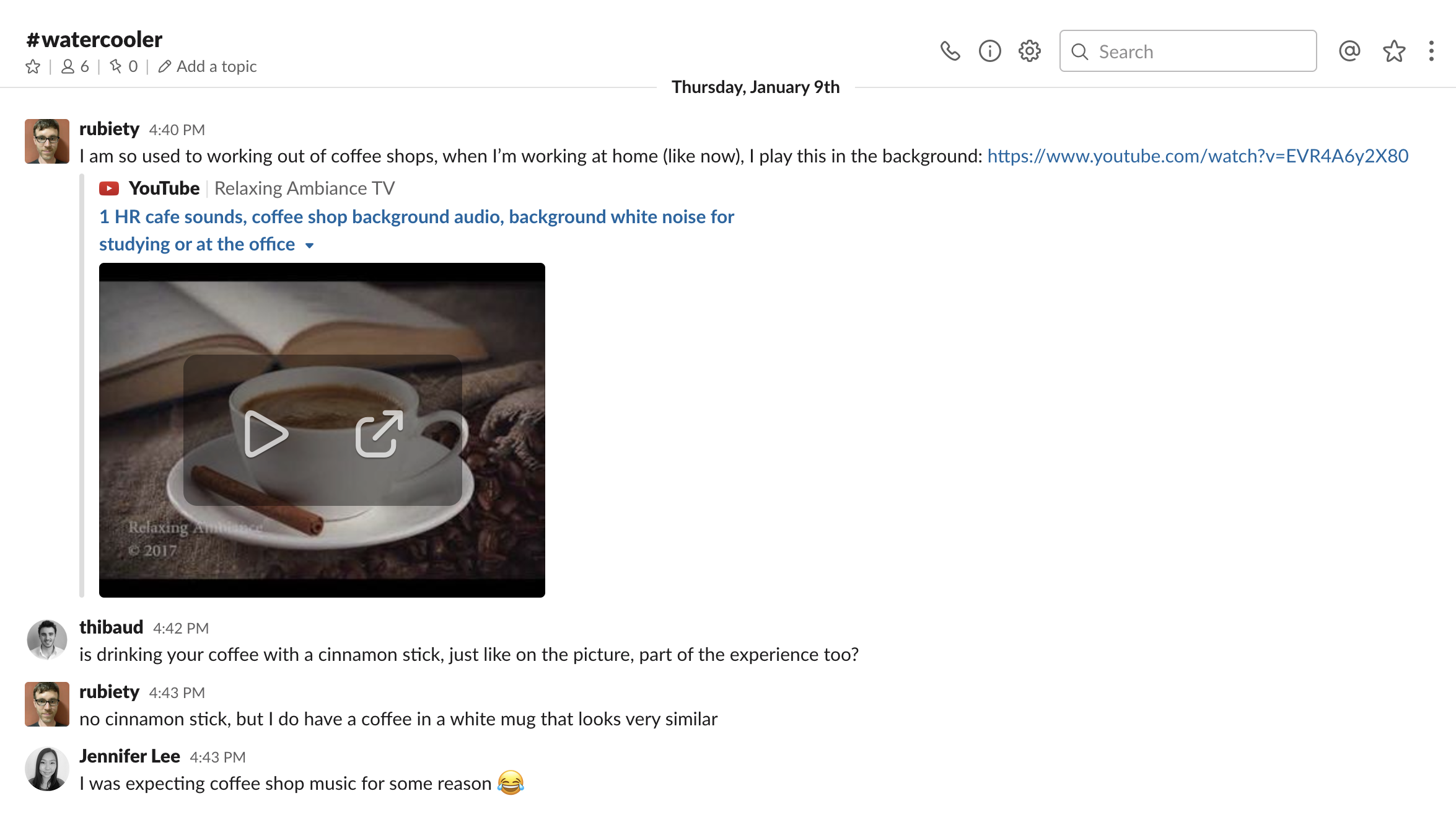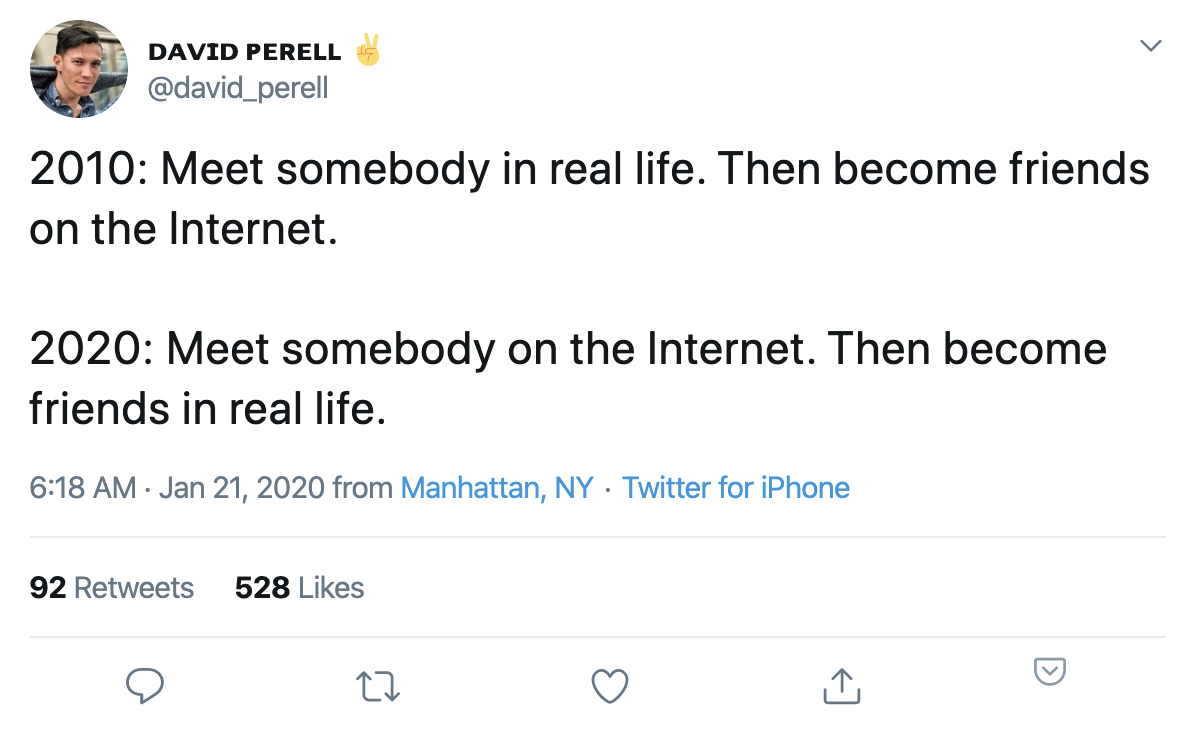Remote Marketing Team: 10 Best Practices To Maximize Collaboration, Productivity & Teamwork
Today, we are going to share ten best practices to maximize collaboration, productivity and teamwork as a remote marketing team.
In fact: we use these exact same tips, tricks, and principles every single day with our in-the-trenches remote team here at Loomly.
Let’s dive right in:

Manage all your social media accounts in one place.
Craft, schedule, & auto-post content to all your social channels, then track analytics and manage interactions from a single, easy-to-use dashboard.
1. Create A Sense Of Psychological Safety
Research shows psychological safety is a key component of collaboration: the more safety a team experiences, the more likely they are to collaborate effectively.
This is especially true for remote marketing teams.
In a work environment where face-to-face interactions are seldom, and text-based communications can often be misinterpreted, establishing psychological safety is paramount.
You want to cultivate a culture where elements like the ones below are seen in a positive light:
- Taking risks
- Sharing ideas
- Making mistakes
- Airing grievances
- Speaking your mind
Furthermore, remote marketing teams must feel they can do this without feeling embarrassed, shunned, judged, or at risk of losing their jobs.
Now:
You do not need to create a soft-spoken environment where employees can say and do what they like without repercussions. In fact, the inverse is actually true.
Professor Amy C. Edmondson, in her book The Fearless Organization: Creating Psychological Safety in the Workplace for Learning, Innovation, and Growth, explains that healthy conflict can actually promote psychological safety.
Writing for Quartz, she says:
“Psychological safety is about candor, about making it possible for productive disagreement and the free exchange of ideas. […] these are vital to learning and innovation. Conflict inevitably arises in any workplace. Psychological safety enables people on different sides of a conflict to speak candidly about what is bothering them.”
While psychological safety creates an environment where team members feel safe sharing, they must also feel safe to challenge others’ ideas (or have their own challenged.)
How you choose to create psychological safety in your remote marketing team is highly personal. But, there are five options we recommend you:
- Hold regular meetings to openly examine risks and mistakes.
- Create an environment of admitting when you were wrong.
- Respond positively to team members’ questions, doubts, and failed-attempts.
- Use remote team-building exercises.
- Allow your team members space to be creative.
2. Craft A Culture Deck
Culture is everything your team does: it is the combined values, and the subsequent actions of every team member.
However: when the distances between companies and employees are great, it is often hard for team members — especially newcomers — to know what the culture actually is.
The expectations in their home office might be a world away from those held by you and the rest of your remote team.
This is where creating a culture deck can help.
Culture decks are documents that outline your organization’s:
- Mission statement
- Idea of culture
- Core values
- Operating principles
They are a roadmap for the kind of culture you want to create with key information about the ideal behaviors and expectations of employees.
Here is the Loomly Culture Deck to illustrate what we mean (and how we define company culture at Loomly):
Better still, you can work with members of your remote marketing team to craft the culture deck. To get their insights on the kind of culture they want to operate within.
3. Create An Online “Water Cooler”
Remote workers may struggle to feel included as part of the wider team.
There are two main reasons for this:
- Physical separation: long distance (or multiple time zones) between colleagues create a sense of isolation.
- Exclusion: in case of a hybrid team, where some collaborators work remotely and other work in an office, remote team members may feel left out by on-site team members.
Effective communication can solve both of these problems. Why?
Well, on the one hand, it is hard to develop or maintain a relationship with a colleague when you do not interact with each other. There are no chance meetings at the water cooler online!

Having open channels of communication — especially for casual conversations — can create stronger feelings of trust, camaraderie, and being part of one larger team.
Studies show that the “water cooler effect” can:
- Create a sense of better team cohesion.
- Increase productivity by 10-15%.
At Loomly, we use Slack to replicate this effect with our #watercooler channel:

You can also increase levels of inclusion by:
- Celebrating important team moments.
- Exploring online team-building opportunities.
4. Promote Face-To-Face Interactions (Even Online!)
You might be familiar with the phrase:
“It is nice to put a face to a name.”
This is something we find ourselves saying more and more in the online world. We all have those people we only know online, who have become great real-life friends:

Credit: @david_perell
There are also those people with whom we have communicated online, but outside of a thumbnail image, we have never seen, heard or met.
For a remote marketing team, these people may very well be their colleagues.
As such, it is important to promote face-to-face interactions. Why?
Because face-to-face interactions have been shown to:
- Build stronger and more meaningful relationships.
- Allow for more complex and strategic thinking.
- Make interpreting team member’s emotions and intentions easier.
These are all factors that positively influence collaboration. Video calls, then, are the next best thing to in-person interactions with each other.
Speaking of which:
5. Schedule A Remote Marketing Team Retreat
Remote marketing team retreats are a great way to foster collaboration and create connections.
They are a common theme amongst highly-effective remote teams, like those at:
These companies use remote team retreats as a way to bring employees together, make them feel valued, and take advantage of that all-important in-person collaboration.
If you have time to invest in team-building activities, you could also see a boost in morale and enjoyment at work.
So, make time to bring your remote marketing team together under one roof.
6. Create A Written Record Of Conversations
Remote teams often suffer from an information imbalance.
This is because:
- On-site employees obtain information by being present; either through the grapevine or official in-house communications.
- Remote employees obtain information by being active in phone calls, meetings, or other discussions.
However, this information is not always distributed to the rest of the remote team. Often leaving people who should be in the know, feeling a little clueless.
To ensure everyone has enough (relevant) information about what is going on, it is good practice to keep a written record of everything that has been said.
This could involve:
- Keeping minutes of meetings.
- Summarizing important phone calls.
- Listing important weekly events.
The documents should then be shared in an accessible place for team members to read.
Doing this helps to ensure transparency, offer peace of mind, and provide context for the current decision-making process.
7. Keep Teams Small And Diverse
When we asked Loomly employees what made them happy in the remote workplace, almost all of them came back with the same answer:
They liked working in small teams.
Specifically, small enough to fit in a booth at their favorite restaurant. Why?
Because working in small teams:
- Made communication easier.
- Developed closer bonds between colleagues.
- Reduced roadblocks.
- Promoted risk-taking.
- Allowed more ideas to be heard (and acted upon).
This desire to work in a small team stretches far beyond our Loomly team, too.
Research shows that:
- Remote workers like working in small teams.
- Smaller teams come with major benefits larger teams cannot compete with.
You can also supercharge this effect by making your teams diverse.
Remote work presents a great opportunity to bring people together from different:
- Experiences
- Cultures
- Insights
- Perspectives
Research from McKinsey shows that putting together a diverse team can result in a 35% increase in creativity.
So:
If you want to maximize the collaboration between your online workers, keep teams small enough to split two pizzas, and diverse enough to want lots of different toppings.
While we are on the topic of diversity:
8. Employ Inclusive Leaders
In this article, we have discussed two important concepts:
- Psychological safety
- Diversity
If you want to create a highly-effective, collaborative remote marketing team, these are paramount.
However:
The success of these concepts is driven, predominantly, by having inclusive leaders.
Inclusive leaders are those who:
- Respect team members
- Are attuned to cultural differences and needs
- Treat all team members equally
- Respond to the needs of the individual within the team
As such, leaders can be both the glue that holds people together, and the driving force behind productivity, collaboration, and psychological safety.
As a member of our Customer Success Manager eloquently put it:
“The encouragement and support of a team leader, with proper guidance and mentorship, can make or break a role. A team leader who helps you professionally and teaches you new things is very important.”
There is also research to back this up.
Harvard Business Review’s analysis of teams with inclusive leaders found they are:
- 17% more likely to be “high performing.”
- 20% more likely to make high-quality decisions.
- 29% more likely to work in a collaborative manner.
So, having inclusive leaders brings benefits you simply cannot ignore.
When you are looking to hire a leader, though, it is worth knowing that people are pretty poor at self-rating their own inclusiveness.
In self-analysis:
- Highly inclusive leaders tend to underrate their skills.
- Non inclusive leaders tend to overrate their skills.
As such, it is better to rely on direct-reporting data and testimonies from their previous teams or employers.
9. Set Clear Expectations And Boundaries…
The final two tips on this list work together.
The first is to set clear expectations and boundaries.
Ideally, you want to make sure that everyone on your remote marketing team is on the same page.
If you have created a culture deck you will already have a good framework for this in place. However, here we are looking more at the day-to-day specifics.
You will want to ensure that everyone on the remote team knows:
- What your current goals are.
- What deadlines you are working to.
- How success is measured.
- What is expected from the coming cycle.
It can also be useful to outline:
- What meetings are mandatory.
- What online times and overlaps are expected.
- When work starts and ends (thus protecting personal time).
Google’s research found that setting boundaries and “clear norms” for remote reams avoid confusion and makes collaboration much easier.
When employees have clarity of vision, culture, and expectations they can create great work within the set boundaries.
Which brings us to the final tip:
10. … But Empower Remote Workers To Do Their Best Work
Boundaries and expectations are a crucial part of remote work.
But, within those boundaries, remote workers must feel empowered and in control.
They need to know that:
- Their leaders trust them to get the work done.
- They control what they are doing (and when they do it).
The American Psychological Association found lower levels of stress and anxiety in workers who feel in control of their workload and schedule.
Many people are remote workers because they have found a system of doing work that works for them: they are self-aware and want to be empowered to do their best work.
The more you can do this, the more doors to collaboration will be open.
Remote Marketing Team Collaboration In A Nutshell
In this article, we have outlined ten tips to help you build a more collaborative and productive remote marketing team. Let’s quickly recap them:
- Create a sense of psychological safety: remote workers need to feel they can contribute with fear of embarrassment and losing their jobs.
- Craft a culture deck: publish a document outlining your organization’s desired culture to help remote teams understand what you are trying to achieve.
- Create an online “water cooler”: promote casual conversation to see a boost in cohesion and productivity (we used Slack for this).
- Promote face-to-face interactions: use video calls to create stronger bonds between colleagues.
- Schedule a remote team retreat: learn from the highly-effective remote teams by bringing your remote team together under one roof.
- Create a written record of conversations: so everyone on your remote team has access to all information.
- Keep teams small and diverse: teams should be able to split two pizzas and have a wide range of experiences to draw from.
- Employ inclusive leaders: ensure leaders are attuned, compassionate, and respectful of the needs of all members of your remote team, regardless of their demographics.
- Set clear expectations and boundaries: create a set of clear norms that remote teams can adhere to.
- Empower them to do their best work: give remote workers time and space to show you what they can do.



